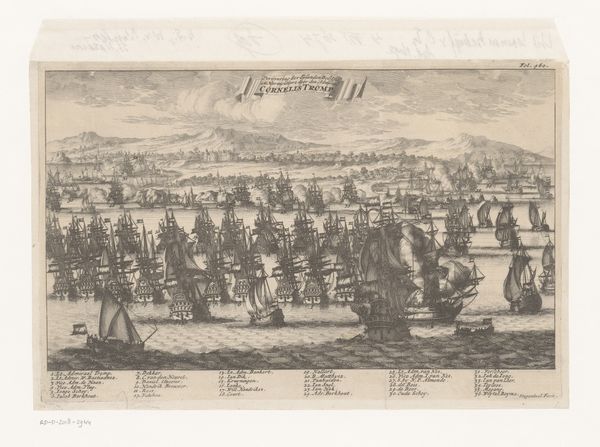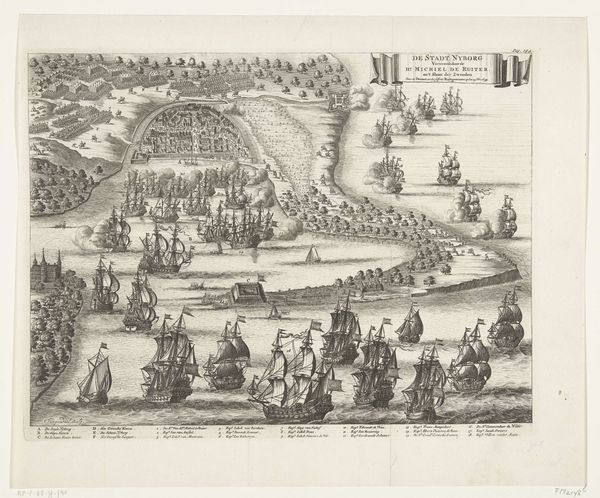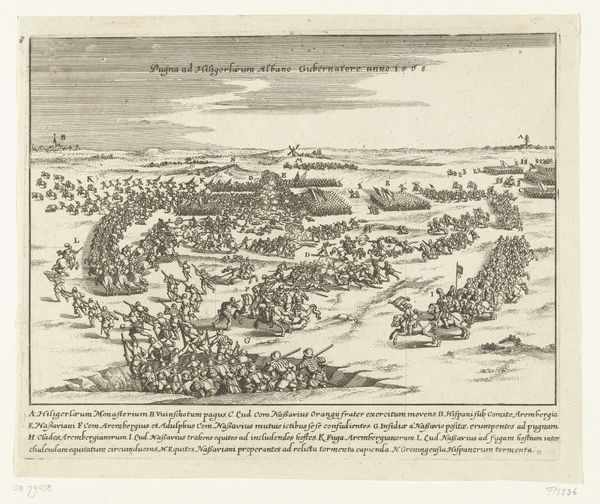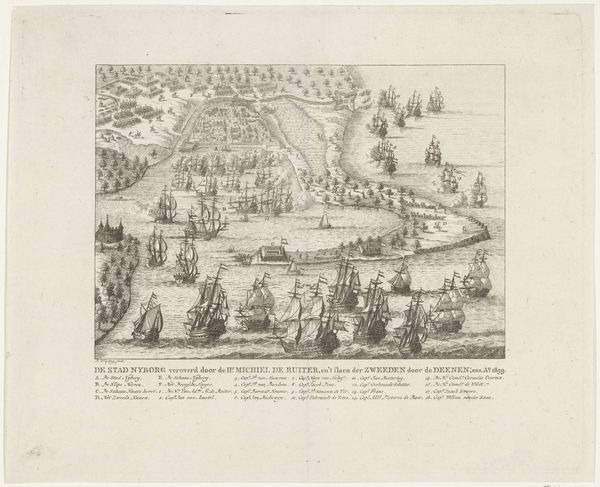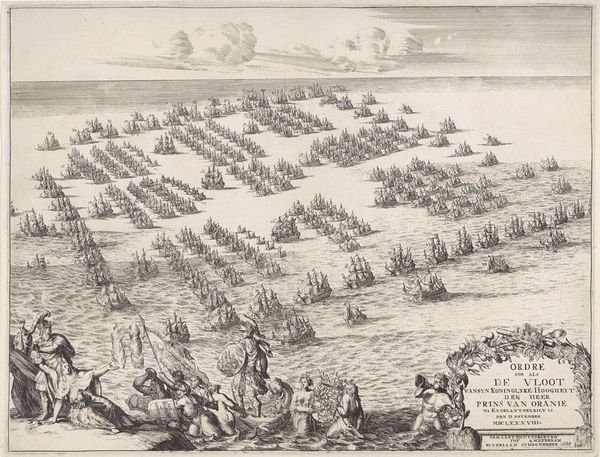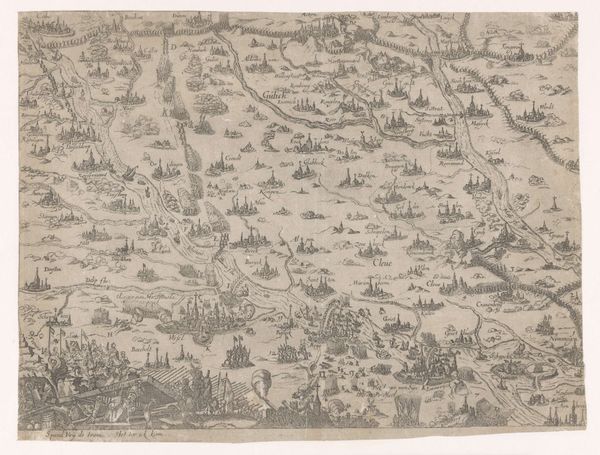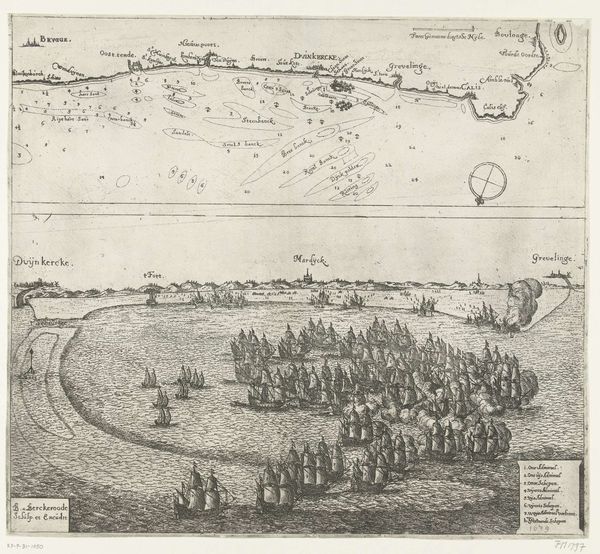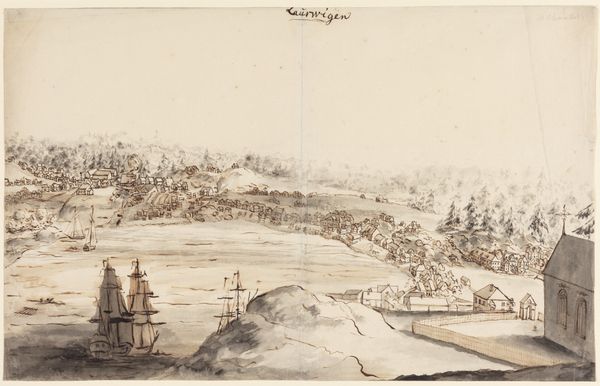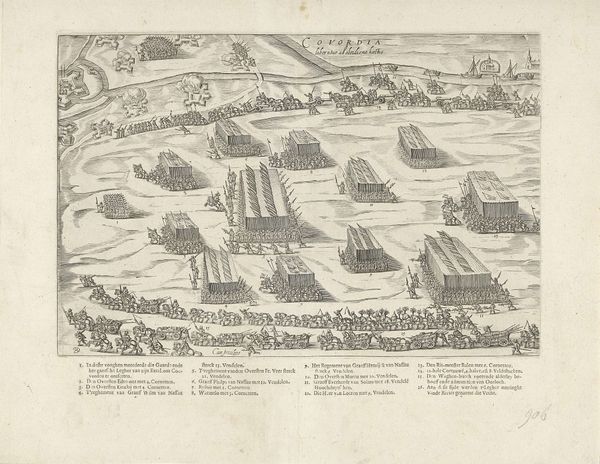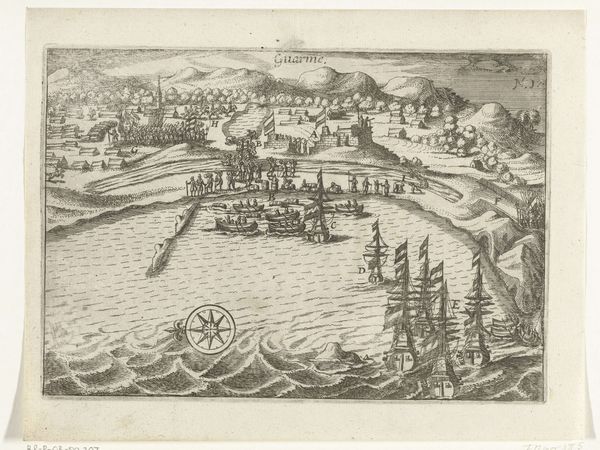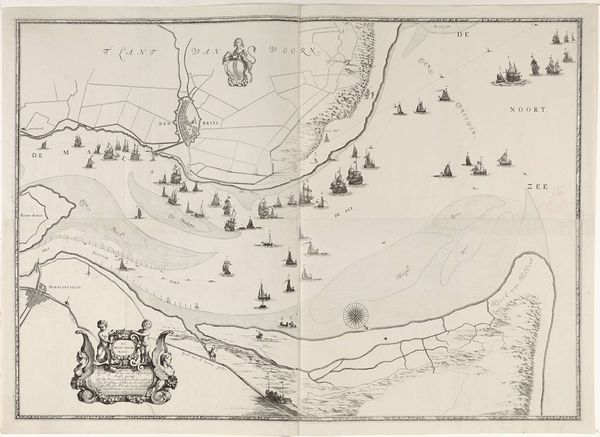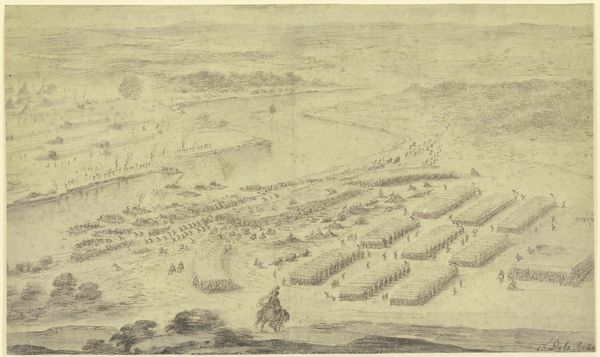
De gecombineerde Deense en Hollandse vloten verslaan de Zweedse vloot bij Öland, 1676 1676
0:00
0:00
romeyndehooghe
Rijksmuseum
print, engraving
#
pen and ink
#
baroque
#
pen drawing
# print
#
line
#
cityscape
#
history-painting
#
engraving
Dimensions: height 475 mm, width 700 mm
Copyright: Rijks Museum: Open Domain
Curator: This incredibly detailed print captures the naval battle of 1676 where the combined Danish and Dutch fleets defeated the Swedish fleet near Öland. Romeyn de Hooghe created this engraving to document the historical event. Editor: My immediate reaction is one of being overwhelmed! The composition feels so densely packed with ships, it's almost chaotic, yet strangely organized at the same time. It definitely conveys a sense of grand scale, doesn’t it? Curator: Absolutely. De Hooghe’s style emphasizes clarity amidst complexity. This wasn’t just about showing a battle, but showcasing Dutch naval power in a period defined by maritime conflict. The organization allowed dissemination to the Dutch public to rally popular support. Editor: I am curious, who was this intended to reach, exactly? Because beyond pure record-keeping, this seems imbued with layers of messaging concerning Dutch identity. The sheer size, plus the Baroque embellishments down below, it is not just reporting an event. Curator: Precisely. These prints weren’t neutral accounts. They functioned as political tools to mold public opinion and solidify national identity during times of war. Consider the baroque framing. It is theatrical and propagandistic! Editor: That's fascinating. So, by presenting this particular perspective, focusing on Dutch prowess, what ideological framework was being reinforced, and, potentially, whose stories were being silenced or marginalized? Who, in that scene, had no voice in de Hooghe's depiction? Curator: It centers a very specific, nationalistic, almost triumphalist viewpoint, prioritizing Dutch and Danish victory, and largely omitting the experiences and perspectives of the Swedish sailors or the war’s wider impact on the Baltic region. It really does speak to the politics of representation during that era. Editor: These depictions are a reminder of how intertwined art is with shaping historical memory. Analyzing them not just as artworks but as cultural artifacts opens up a complex, and compelling understanding. Thank you for your insightful context! Curator: It's been my pleasure to highlight the complex historical factors surrounding the image and challenge accepted perceptions. Understanding context can offer enriching perspectives to any viewer.
Comments
No comments
Be the first to comment and join the conversation on the ultimate creative platform.
